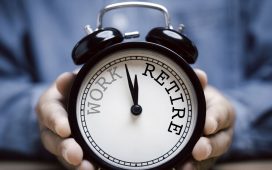What can you get for £150,000? In the era of €1 Italian ruins, a disused London staircase selling for £20,000 and Monte Carlo penthouses and Californian mega-mansions fetching north of £200m, it’s not a question with an easy answer. Back in 1988, when the Observer investigated the very same question, it was a similarly mixed – if vastly more encouraging – picture across the world.
UK readers should take a deep breath before reading on. The article explained that £150,000 was ‘three times the national average house price’ (it’s currently £285,000) ‘and a third more than the average for a home in one of the central London boroughs’. With that budget, you were, regrettably, priced out of Knightsbridge and Belgravia, but ‘It is still possible to find, for example, a good one-bedroom flat in Chelsea or a three-bedroom maisonette in a modern block in Holland Park, W11.’ For reference, the average house price in Kensington and Chelsea is currently £1,275,716. You could also get a ‘47-acre deer park complete with a five-bedroom house’ or 11 unmodernised two-up, two-downs in Hull.
Elsewhere things got even more interesting. In Paris, if an Eiffel Tower view was likely to be tricky (though apparently not impossible for ‘patient house hunters’), a three-bed flat was eminently achievable in a relatively unknown but ‘fast improving suburb’, the Marais. NYC was a trickier proposition, but according to an agent the Observer consulted, ‘You wouldn’t be greeted with hollow laughter if you were looking in that price range.’ He had just bought himself a one-bedroom apartment on Fifth and Madison for around the target price.
But it’s holiday season, so how about a spot at the seaside? Your money would get you ‘a four-bedroom Mediterranean villa on the Côte d’Azur, just along the coast from Saint-Tropez,’ while in Barbados, you could snag yourself a ‘three-bedroom, two-bathroom beach front home and still have change to buy a mango punch or two’. We might all need a mango punch or two after reading that.







